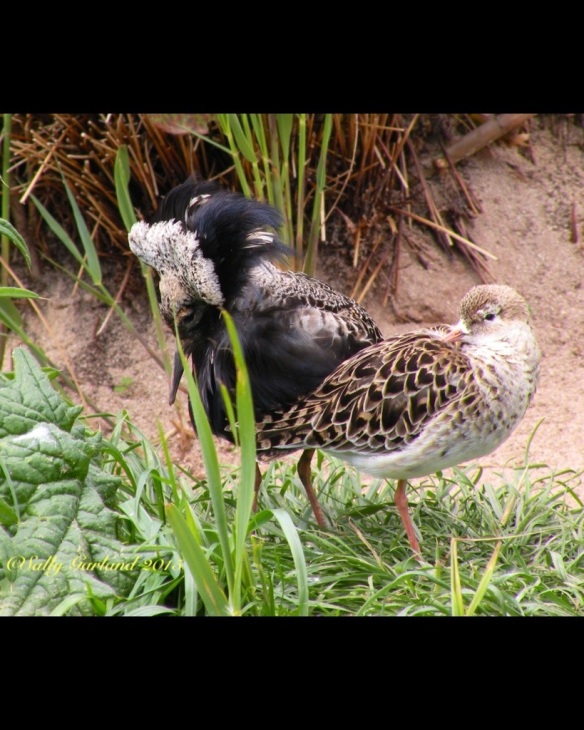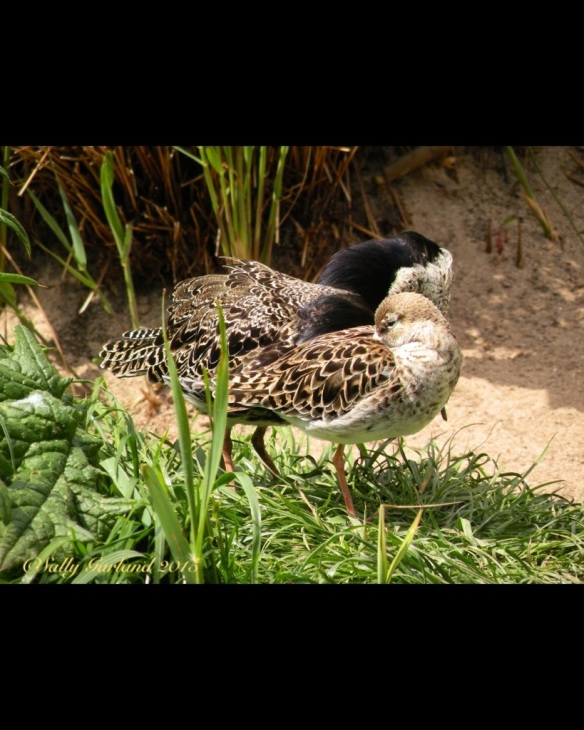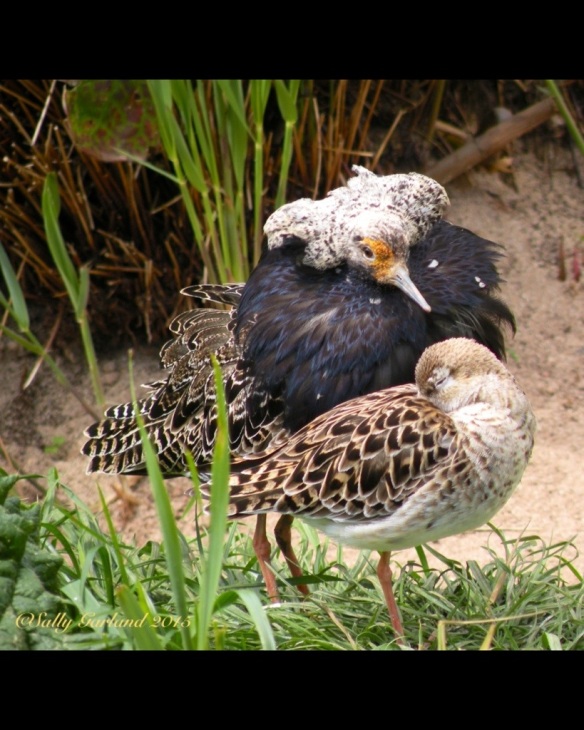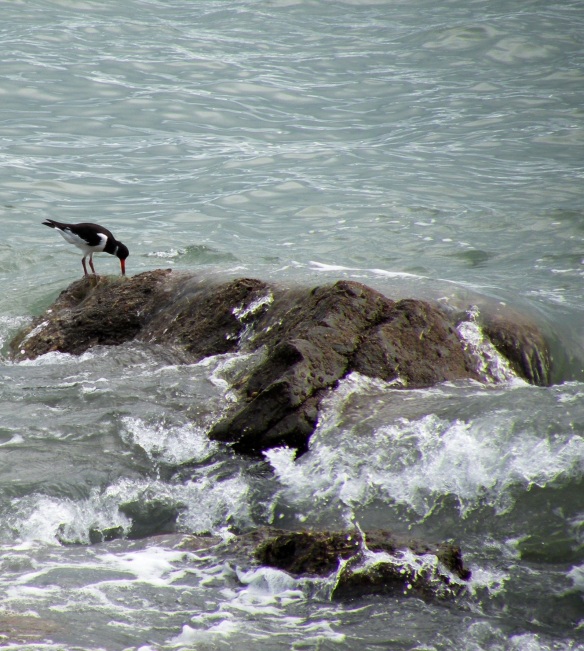The Ruff…and, at this time year definitely, the ready…. Philomachus pugnax
The Ruff is a medium-sized wading bird. The male is much larger than the female. It has attractive brown and white patterned feathers, an orange face surrounded by white plumage and an ornamental collar which it uses in an impressive courtship display

The female is less showy with lightly patterned brownish grey plumage.

During the courtship display this ruff dances around the female ruffling his collar. He looks larger and quite magnificent although the little female looks totally unimpressed.

The female, after she has chosen her suitor, will eventually lay four eggs on the ground. Ruffs breed in marshes or wet meadows.
The ruff eats insects and plants which it obtains from foraging in soft mud or grassland.

The bird got its English name because of its neck collars similarity to the ruff, an elaborate collar, that was fashionable for people in the Seventeenth century.












